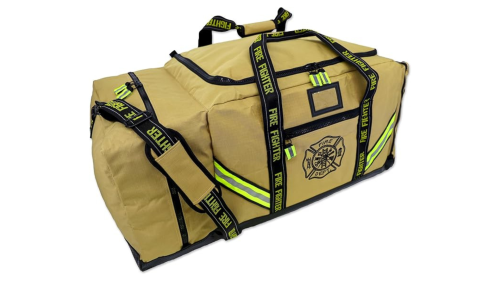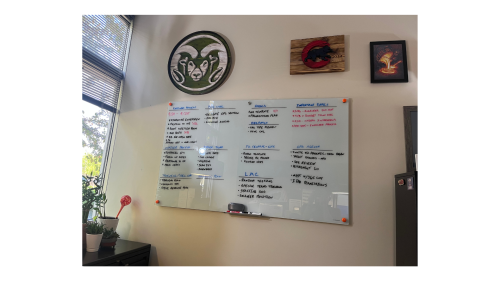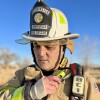To be clear, nothing beats talking about actual fireground tools and tactics. However, when roles and responsibilities change, so do the tools needed to maximize effectiveness. The role of a chief officer has evolved beyond emergency response. Chiefs today must be functional across multiple domains — operations, administration, organizational strategy and development, and community risk reduction. To thrive in these areas, we need the resources to match.
The following are just a few things I’ve found valuable while striving to boost efficiency and effectiveness as a chief officer. This list is by no means exhaustive, and it is subject to regular updates. The investments are also not all monetary. Some are free of cost, but the investment is in the time to learn them.
Emergency response
Emergency response no longer consumes the bulk of our time; however, it will always remain our purpose. Most chiefs need to be prepared to drop what they are doing and respond, whether from the office or at home.
1. Gear bag: As a battalion chief, I kept my gear strategically staged on my vehicle for quick donning, just as I would when working on a truck company. As an administrative chief, I frequently switch between my work and personal vehicles, so keeping the gear organized and packaged together works best for me. A decent gear bag is critical, and I keep mine packed with items beyond just PPE. I prefer space and compartmentalization for extras like tactical thermal layers, flashlight, radio strap and some important documents.
2. Boots: Good footwear is essential, even for a chief. I like this “Aussie”-style boot that slips on and off easily. They’re comfortable enough for the office but protective for emergency scenes. Plus, they are easy to change between different uniforms throughout the day or when donning gear.
Organizational tools
Decision-making clarity is key for any chief, so it’s important to be able to juggle projects and seamlessly transition from one to the next. The factory-installed hard drives that come standard in most humans aren’t enough. These are a couple of tools I use to stay organized and keep all the balls in the air.
3. Remarkable digital notebook: This device has been a game-changer for me. I prefer to take notes by hand, especially when meeting with people, as I find I can stay more engaged and less distracted. Previously, I carried a separate notebook for every project or area of responsibility, which was cumbersome. This notebook feels like writing on paper but with a built-in digital filing system for quick reference and recall. It can translate handwritten notes to typed notes, and seamlessly sync between the phone app or your computer. I also use it to read and mark up documents. The price is a little steep but worth every penny.
4. Dry-erase board: I upgraded to a large glass board for my office. It looks significantly better than traditional whiteboards, making it more inviting to use and display on the wall. I find myself back and forth to this board all day long, making notes or working through processes and project timelines.
Health and productivity products
More time at a desk means that extra effort and intention must be put into personal health and wellness. We know physical health is closely linked to improved mental health and increased productivity. We also understand reality. These jobs are demanding, and busy schedules control us, so we need to control the controllable factors and sometimes even get creative.
5. Wireless earbuds: Good wireless earbuds enable seamless transitions from phone calls to workouts to Teams meetings. There isn’t a rule that says we must sit at a desk to get things done or stay connected. If it’s one of those days where the workout isn’t happening as planned, people are extra challenging, or I feel stuck, I force myself to get up and walk.
6. Smartwatch: When smartwatches first hit the market, they seemed like unnecessary, gimmicky technology. Now, I can’t imagine life without one. I use mine as a health and workout tracker, a productivity tool, and navigator. I like being able to triage notifications while in a meeting without the distraction of pulling out my phone. And the simple “get up and move” notification is a nudge many of us need.
Seamless transition time
As chiefs, we frequently go from meeting to meeting in different locations and virtually. We often present to groups. We also understand that work doesn’t stay at the office. The ability to smoothly transition to various environments, including home, is key.
7. Assortment of cords and connectors: Having learned the hard way, I now always carry a complement of cables, connectors and chargers. Rooms never have everything you need, and there isn’t time to “put in a ticket with IT.” Being self-sufficient will save your sanity and increase credibility. I keep one of these small organizers with me in my laptop bag, whether traveling or just a standard workday.
8. Laptop bag: The importance of a durable and right-sized bag to carry devices and other essential items can’t be understated. My preference is a backpack style bag. The size is ideal for day-to-day use and travel. I carry two smaller laptops, an iPad Pro and my Remarkable digital notebook, and I still have room for a book or two. All loaded up, it fits under most airline seats.
References and resources
Whether it’s mentoring other officers, creating operating guidelines, or preparing a presentation, it’s essential to have some trusted “go-to” resources at the ready.
9. Recommended reading: Here are a few of the books I’ve been turning to for personal reference or recommending to others frequently.
- There have been some significant and iconic strategy and tactics books through the years. “Mastering Fireground Command” by Anthony Kastros and Brian Brush has quickly become one of my favorites. It is modern, user-friendly and applicable to the newest task-level firefighter through the chief-level command officer.
- On the topic of health and wellness, “Outlive” by Dr. Peter Attia is outstanding. His work, which is centered on longevity, does a great job blending science with action and is relevant to many of the current firefighter health and wellness initiatives.
- Like it or not, we write a lot as chiefs, so we need to do it in a way that people will read and understand. “Writing For Busy Readers” offers tangible and straightforward strategies to simplify writing and be more impactful based on the intended purpose and audience. Their website also provides a free AI tool that allows users to input an email or document, transforming it into a more readable format.
10. Digital Tools: It’s natural to focus on hard goods when making a list of “tools of the trade”-type investments, but I must also include some valuable apps. Whether geared toward growth and development or serving as personal assistants in the day-to-day grind, here are a few apps I wouldn’t want to be without. The best part is some of them are free! The investment part comes in the time to get to know them.
- I love to read but have less and less time to do so. I also have a commute, so I spend a lot of time in the car. Through audiobooks, Audible enables me to stay productive with personal development or escape from work while commuting or exercising.
- Grammarly is another subscription I find worth paying for. The free version works fine, but I find value in the paid subscription. We write a lot, so it’s great to have a built-in editor. With it running in the background, I can work faster without hanging on every word, knowing I will have edit recommendations waiting for me.
- Numerous generative AI platforms exist, and most offer excellent free options. They all have different strengths and weaknesses. ChatGPT is probably the most familiar and has become a day-to-day personal assistant, essentially replacing my standard internet search engine. I also use it to summarize lengthy documents, as well as edit and structure new ones.
- ChatGPT may be the AI workhorse, but the free version of Perplexity AI is likely my favorite right now, and it has excellent fire service application. It’s my research assistant when preparing a presentation, writing a policy or evaluating data. It provides thorough summaries and cites all its sources, along with links to access them, allowing them to be verified or investigated in more depth. If you haven’t explored beyond ChatGPT, Perplexity may be worth the time.
Get your gear
No single tool will make or break a chief officer’s performance, and so much comes down to personal preference. Some of us are more technology-focused, while others prefer to go analog, which is perfectly fine. The bottom line is that fire service leadership today demands competence beyond the fireground, and we must have systems and tools in place to help us navigate it.
Being intentional about the investments we make reflects a commitment to professionalism and growth. The environment is changing fast and has become more complex than ever before. For chiefs leading with purpose, the right tools aren’t luxuries — they can be force-multipliers.


























































